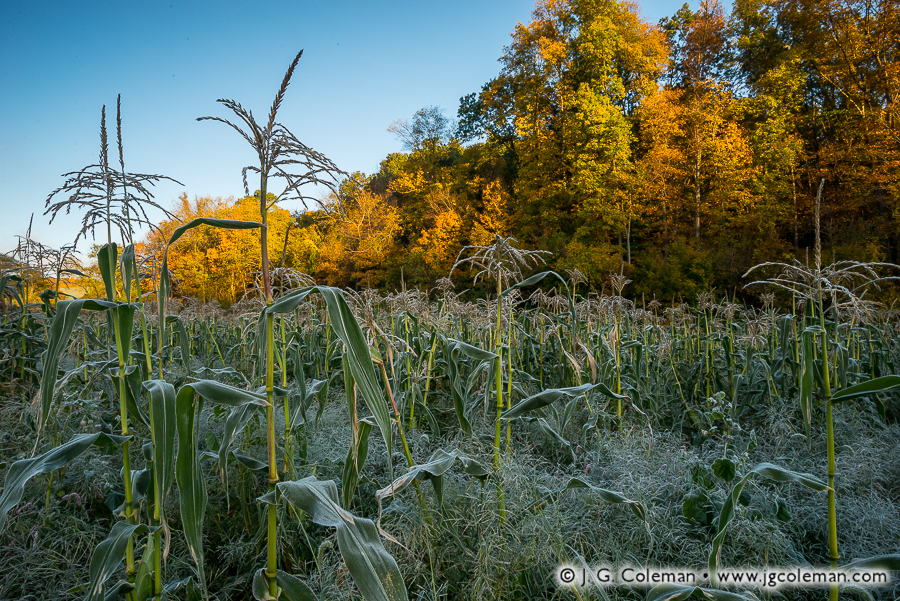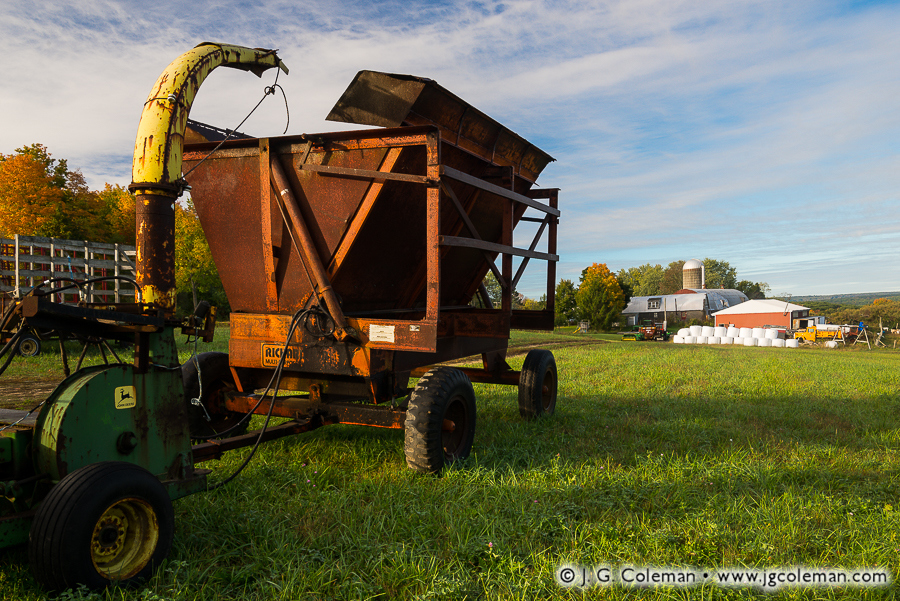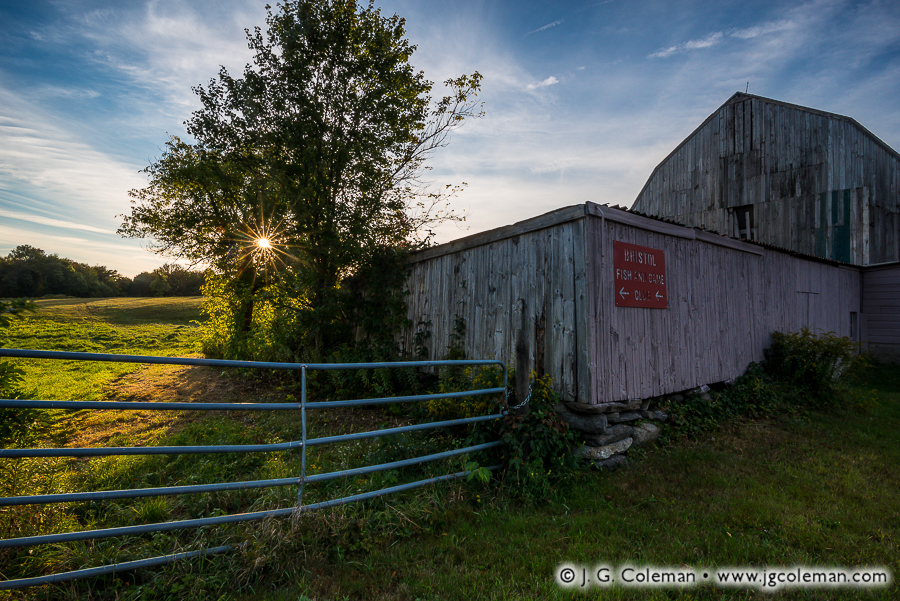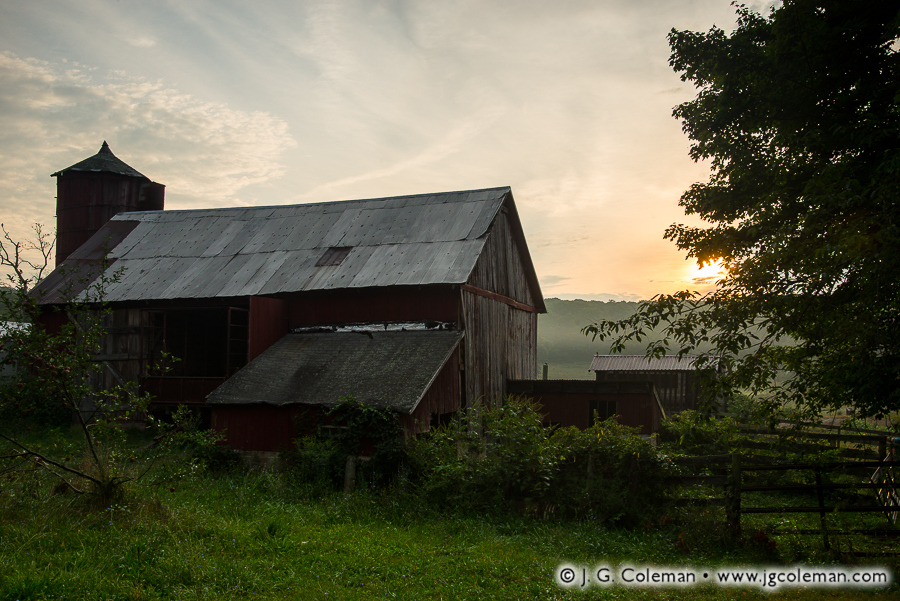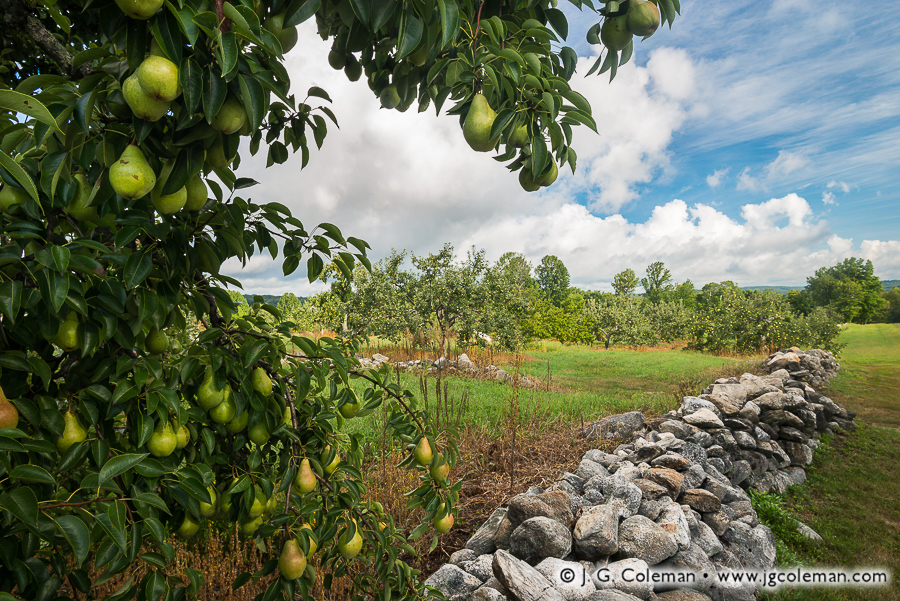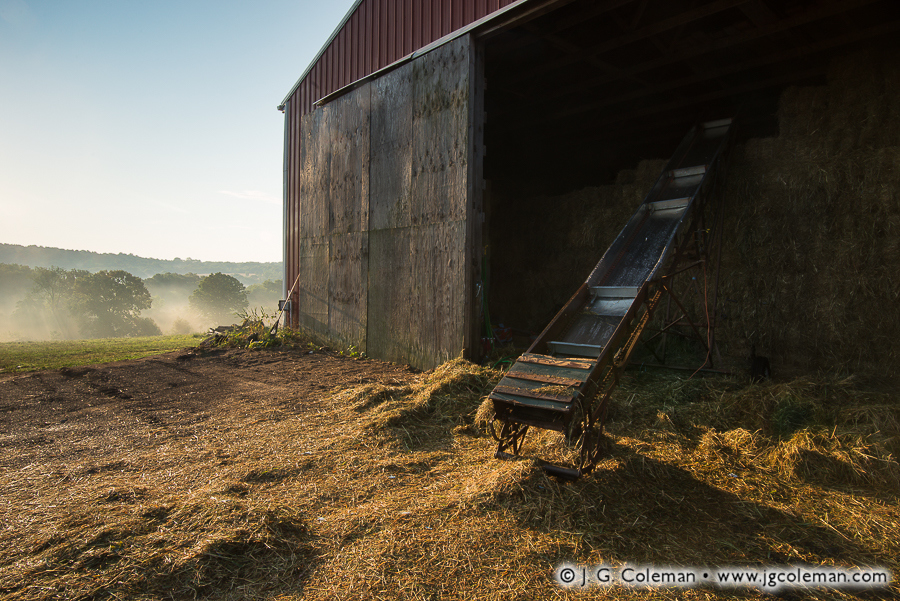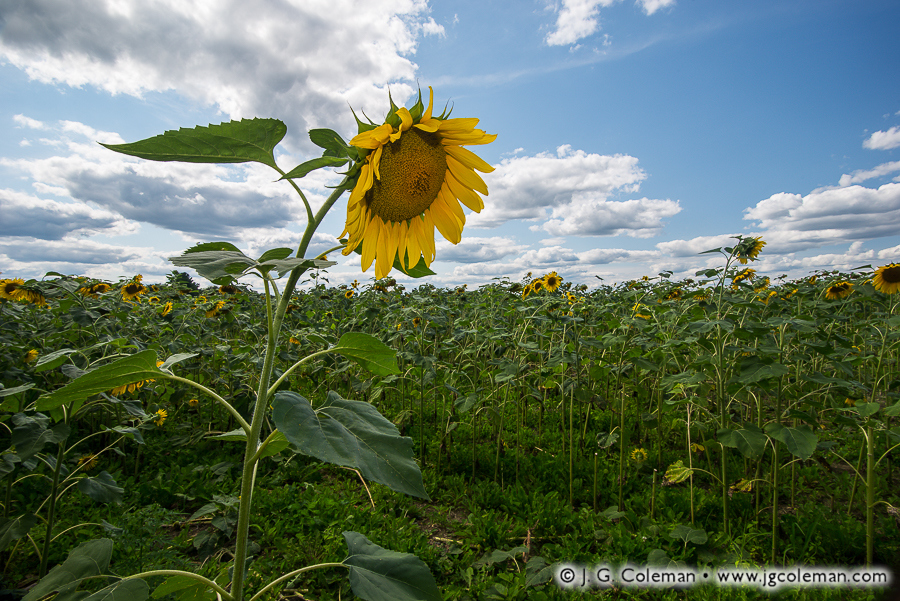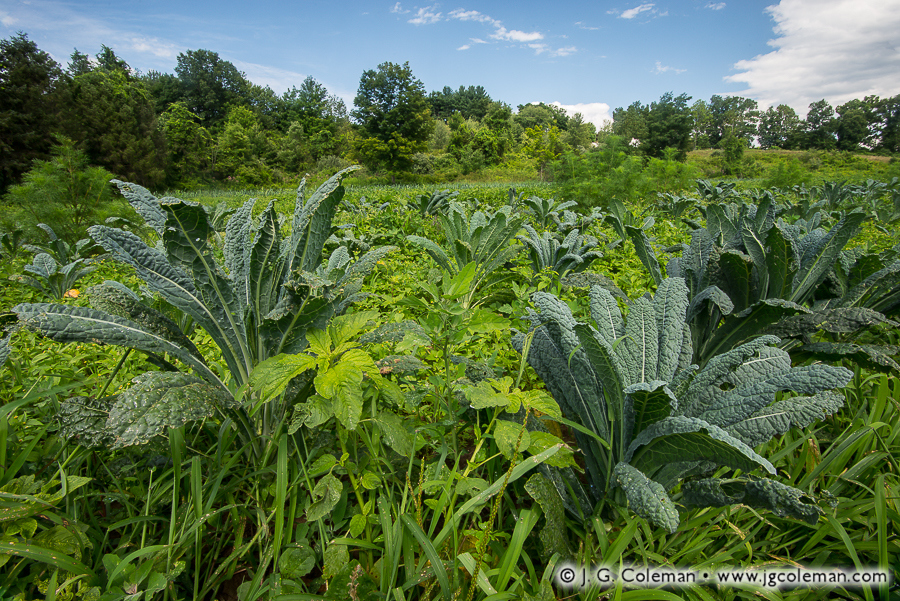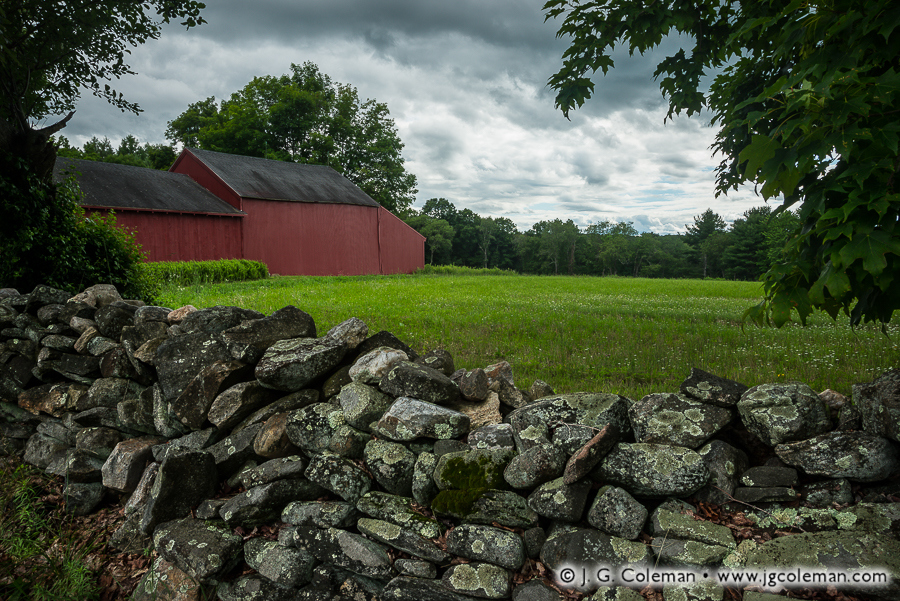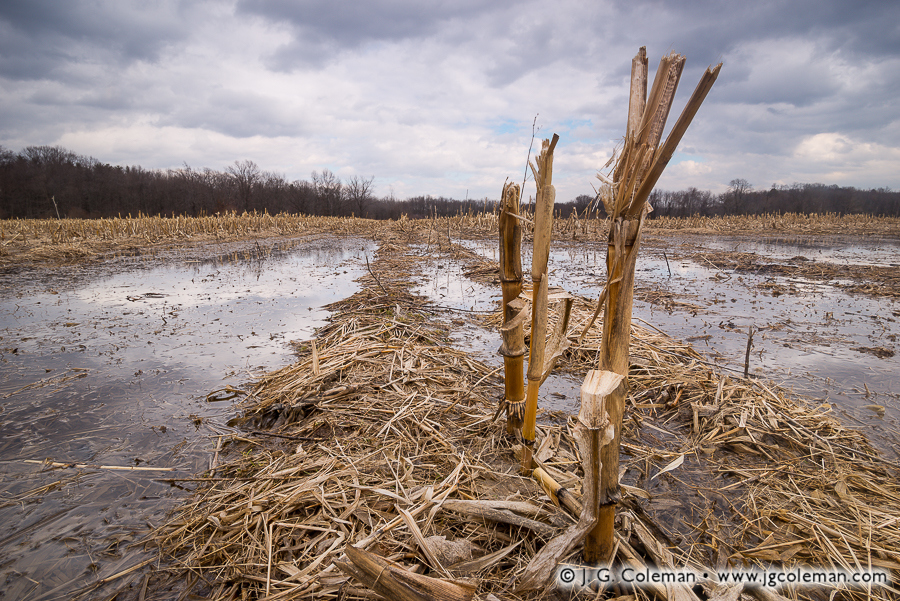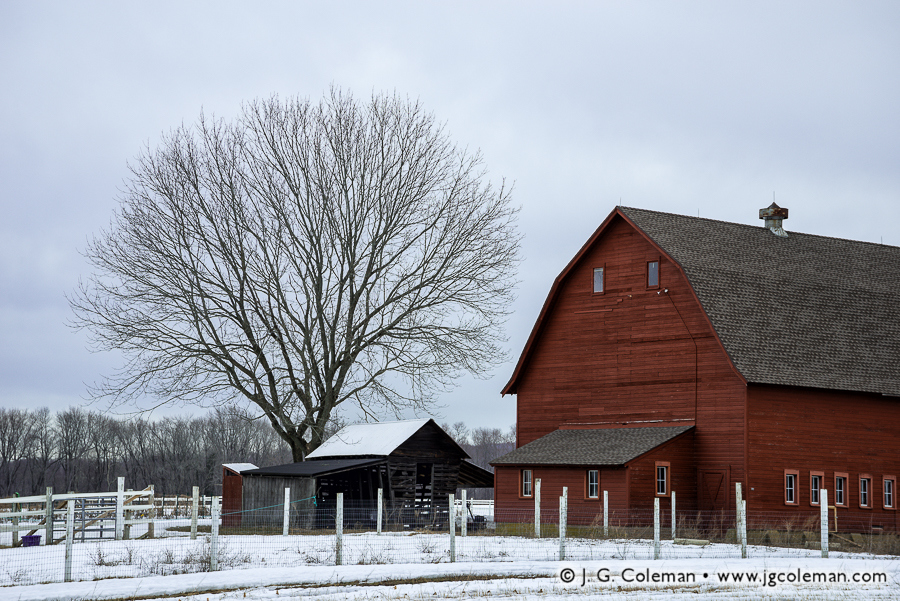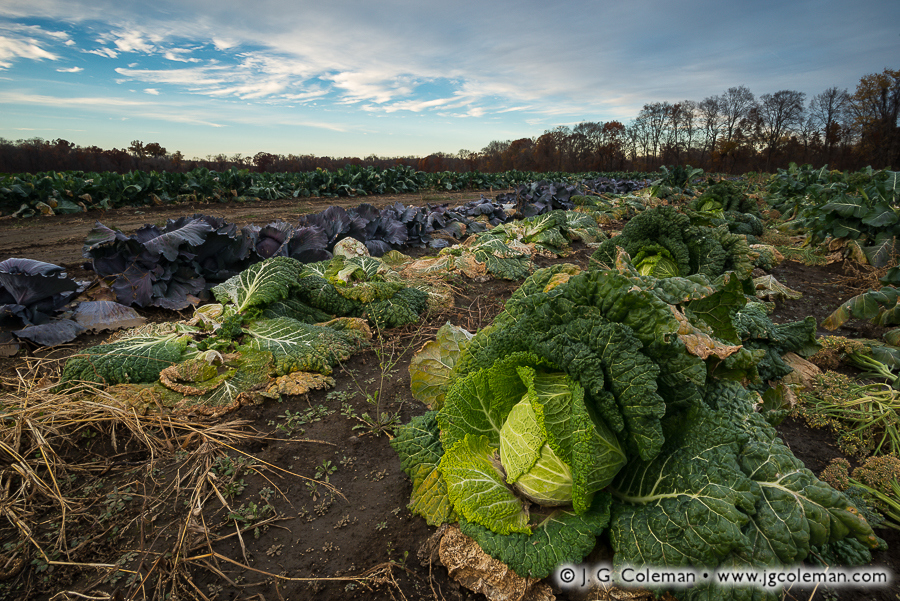
Cabbage in Muddy Field during November,Farmington, Connecticut
© 2015 J. G. Coleman
Bare forests line the margin of a muddy field in the Farmington River Valley as autumn deepens, bringing colder temperatures and even occasional frosts. Cabbage crops, still verdant and thriving under the setting sun, stand as an unlikely contradiction in the otherwise stark, sleepy landscape.
By early November, most crops in New England have been harvested and the fields laid bare. Farms that were bristling with corn, tomatoes, squash and other crops just months earlier become dormant expanses of open land.
Persistent “autumn cabbages” are among the rare exceptions, though. Resilient and cold-hardy, these white and red cabbage varieties continue to grow and yield under conditions that might seem incredible to those who are unfamiliar with the vegetable’s durability. In this piece, we find a row which has just recently been harvested amidst other plants that continue to mature.
Purchase a Fine Art Print or Inquire About Licensing
Click here to visit my landing page for “Yankee Farmlands № 44” to buy a beautiful fine art print or inquire about licensing this image.
Want to See More?
Be sure to check out more work from my Yankee Farmlands project, an on-going journey through the farmlands of Connecticut in celebration of New England’s agricultural heritage.



